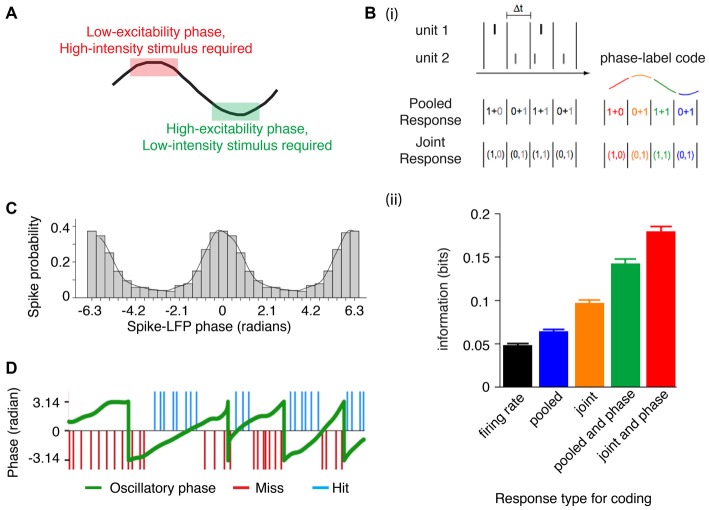Figure 2.
Phase alignment permits integration of information. (A) Stimuli can be encoded even before the phase of maximum excitation (i.e., if a strong depolarization occurs when the local circuit is resistant to perturbation), whereas stimuli with a weaker activation are encoded closer to the high excitability phase (when the circuit is sensitive to perturbations). (Bi) Neural codes that rely on temporal precision either pool the response of spatially distributed neurons (pooled response code) or maintain the spatial distribution responses (joint response code; left). However, taking the phase of a population oscillation can be leveraged to provide another dimension to coding (right). (ii) In the auditory cortex of macaques listening to natural sounds, accounting for the phase using either a pooled or joint response increases the informational content of the neural representation (illustration adapted from Kayser et al., 2009). (C) Phase-dependent rate coding is evident in area V1, where the firing rate increases associated with a preferred orientation occur during a specific phase of the gamma cycle. In other words, orientation selectivity is dependent on the phase of ongoing gamma (adapted from Womelsdorf et al., 2012). (D) Near threshold somatosensory stimuli are detected when the stimulus occurs during the rising phase (but not the falling phase) of an ongoing infra-slow oscillation (~0.1 Hz). This further suggests that encoding of somatosensory stimuli depends on the phase of the oscillation (figure adapted from Monto et al., 2008).

